Explore the Best AI Image Gallery

Virtual Reality and Augmented Reality: Transforming the Gaming Landscape
In recent years, Virtual Reality (VR) and Augmented Reality (AR) have revolutionized a variety of industries, with gaming standing out as one of the most dynamic fields of application. These immersive technologies enable extraordinary shifts in how games are designed, played, and experienced, leading to enriched interaction, storytelling, and engagement. This blog post explores the impact of VR and AR on the gaming industry, their creative applications, ethical considerations, and potential future trends.
The Immersive Experience of VR and AR
VR technology provides players with an immersive experience by creating a simulated environment in which they engage with digital worlds. Players wear VR headsets that pair with hand controllers, allowing them to interact physically with the three-dimensional space. On the other hand, AR overlays digital content onto the real world through devices like smartphones or specialized glasses, blending virtual elements with actual surroundings.
Games like Beat Saber and Half-Life: Alyx demonstrate VR's ability to create deeply engaging experiences by placing players right in the heart of the action. In AR, games like Pokémon GO exemplify how players can explore their surroundings while interacting with digital characters, fostering social interaction and community engagement.
Impact on the Creative Industry
The introduction of VR and AR into gaming has significantly impacted the creative industry. Developers now possess innovative tools to expand storytelling, creating narratives that adapt according to how players interact with environments. This interactivity enhances emotional engagement and makes experiences more memorable.
The real-time rendering capabilities of VR and AR require artists to rethink traditional design processes. Artists must create more dynamic and responsive content, compelling them to adopt new skills, such as 3D modeling and animation. Furthermore, the collaborative nature of VR allows multiple users to work on designs simultaneously within a virtual space, fostering creativity and innovation.
Potential Uses Beyond Gaming
While gaming is the most visible application of VR and AR, the potential uses of these technologies extend far beyond entertainment. Industries such as education, healthcare, military, and tourism also stand to benefit. For instance, VR can be used to create immersive educational experiences that provide students with a hands-on understanding of complex topics, while AR can enhance historical tours by overlaying historical images and information onto present-day locations.
In the healthcare sector, VR simulations allow medical students to practice surgical techniques in a risk-free environment, while AR can assist surgeons during operations by projecting important information directly onto the patient's body.
Ethical Considerations
The integration of VR and AR raises various ethical concerns that warrant careful consideration. One major issue is the potential impact on mental health. Prolonged exposure to virtual environments can lead to disorientation, addiction, or even escapism as some individuals may prefer immersive worlds over reality. Designers and developers must be mindful of creating a balanced experience that doesn’t detract from a player's real-life responsibilities.
Privacy is another critical concern. AR applications that utilize location tracking can pose risks for data privacy, as sensitive personal information may be collected and exposed. Developers need to be transparent about user data collection and ensure that end-users have control over their information.
Future Trends
As technology advances, the future of VR and AR in gaming looks promising. Here are some trends to consider:
- Cross-Platform Compatibility: The demand for games that can be played across VR, AR, and traditional platforms will continue to rise, enabling a broader audience to engage with immersive content.
- Improved Hardware: Advancements in VR headsets and AR glasses will make them more affordable, lightweight, and comfortable, encouraging wider adoption among gamers.
- Increased Focus on Social Experiences: Social VR experiences are likely to grow in popularity, as players seek communal gaming experiences, enriching connectivity through shared gameplay.
- AI Integration: The incorporation of artificial intelligence will lead to more advanced, responsive game environments that react dynamically to player actions and decisions.
- Accessibility and Inclusivity: Developers are likely to pay more attention to create accessible gaming experiences for a diverse audience, ensuring that all players, regardless of ability, can enjoy VR and AR technologies.
In conclusion, the intertwining of VR and AR with gaming presents unique opportunities and challenges for the creative industry. As these technologies continue to evolve, they will reshape how games are developed, played, and experienced. The key will be balancing creativity with ethical considerations, ensuring a sustained, positive growth trajectory for immersive gaming.
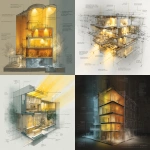






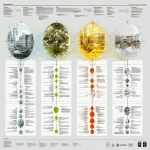


](https://images.ai-img.art/thumbnails/150/3521ea1bce510dbac19d74a3e037e7179b754ae98e8a44c08863e51468c18caa.webp)
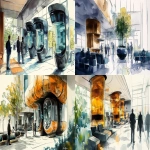



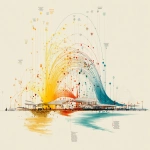

](https://images.ai-img.art/thumbnails/150/93f6b867d7e0d1ef5b08c9115efd6d3cbcc0fcfe07dc47e55d9b3a50056a189e.webp)
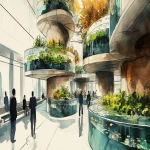












](https://images.ai-img.art/thumbnails/150/469c20665b824a8c49e8b66856a2f9843e7a36c40760ace1e7fd5f2125a32e25.webp)


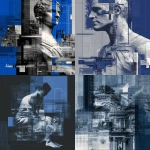


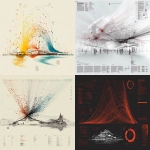









](https://images.ai-img.art/thumbnails/150/9bfac23b6df1e372ace320fda84e18e5e2e668451feacef8c46af60a9f444ad6.webp)

